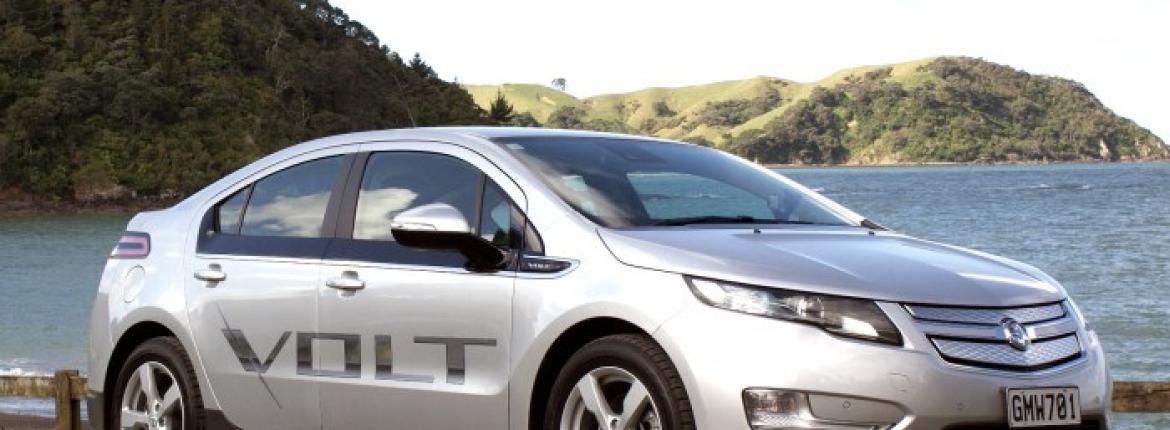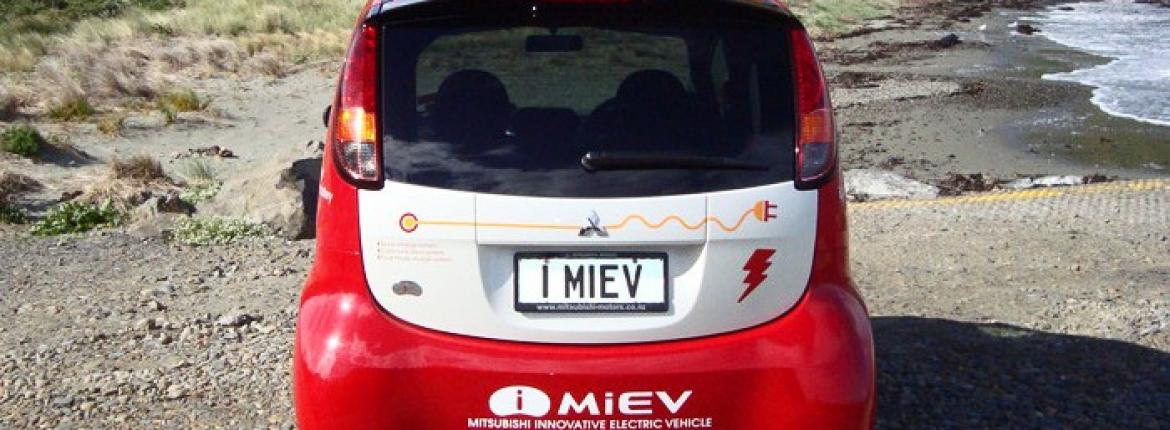Electric vehicles are here, now. To see how functional they are in day-to-day life, the AA Motoring Services team got behind the wheel of two ‘pure’ electric vehicles (EVs) and the first long-range e-car available in New Zealand.
We started with Mitsubishi’s quirky little iMiEV. This tiny car has seating for four and adequate boot space for shopping trips.
Starting the iMiEV we were greeted with silence instead of the usual clatter of internal combustion engines, which was unnerving at first, but switching on the radio helped us feel more at home!
The iMiEV is fitted with a rear- mounted electric motor, producing 49kW of power and 180Nm of torque, to power the rear wheels. It zips around town without emitting any pollutants, although the lack of noise poses a risk to pedestrians, especially those who are sight-impaired, and cyclists.
On the motorway we accelerated hard to get the skinny tyres up to the legal speed limit. While it’s capable of cruising at 100km/h without too much trouble, it’s better suited to inner city roads.
The iMiEV has 88 lithium-ion battery cells, located beneath the passenger compartment, which make up the 330V power supply. Mitsubishi claims the car can travel up to 160km fully charged but, by our reckoning, just over 100km of motoring under normal driving conditions is more like it.
Next we drove the 2011 ‘World Car of the Year’ winner, the Nissan Leaf. This full size, futuristic-looking car with seating for five and a practical boot, is an impressive, environmentally-friendly family car.
We pushed the start button and, again, there was silence. Selecting Drive with its high-tech joystick, we headed off. To encourage the driver to be light-footed, the Leaf has a selectable eco-drive mode, which has the display on the instrument panel ‘growing’ leaves; the more leaves you have, the less battery power is being chewed up.
Performance is on a par with similar-sized petrol vehicles and uphills were tackled with confidence.
On the motorway, the weight of the 192-cell lithium-ion battery pack (located under the passenger compartment floor) kept the vehicle nicely planted on the road, while the 80kW/280Nm delivered from the electric motor had us easily hitting the speed limit.
If it weren’t for the futuristic design and lack of sound, no one would know this vehicle was electric. Nissan claims the Leaf can travel up to 170km before it’s in need of a recharge but, depending on driving style, we believe 120km is more realistic.
Finally, it was the turn of Holden’s new Volt. This car differs from the Leaf and the iMiEV in that it is not a pure EV. It uses a petrol-powered ‘range extender’ motor to charge the battery; an electric motor propels the car.
The Volt’s sleek design contributes to its economy, too. Holden says the aerodynamic design elements add five kilometres to its range in electric mode.
We drove the Volt from Auckland to Russell. The car’s 111kW/370Nm electric motor had us quietly cruising the motorway and, when the battery power was depleted, the range extender kicked in to charge it. When we demanded more power, the range extender would rev higher to supply sufficient charge to the 288-cell lithium-ion battery pack.
The vehicle felt composed and handled the twisty Russell road confidently. It was a fun car to drive.
Holden’s official claimed range is 87km on pure electric mode, but the results from our round trip indicate a more realistic figure of 64km on a full charge, with predominantly motorway driving.
On arrival in Russell, we plugged the Volt into a regular electrical wall socket to fully charge overnight.
The range extender, a 1.4L petrol engine, uses premium 95 octane juice to fill its 35-litre fuel tank. On this trip our average fuel consumption reading was 5.5L/100km which, along with the battery power, had us back in Auckland with petrol to spare.
For drivers confined to city limits, the two pure EVs are very practical vehicles. For those leaving the city, the Volt will take you as far as you need to go with an occasional petrol stop.
The Mitsubishi iMiEV is currently priced at $59,990; Nissan’s Leaf has a $69,600 sticker price. Holden’s Volt tops the board at $85,000.
Whether you label the Volt a Long Range Electric Vehicle or a Plug-In Hybrid Electric Vehicle, it’s the closest thing to making EVs mainstream.
The iMiEV and Leaf are great cars to drive but, unless you want to stop every 100km or so to plug the car in for a recharge, they don’t have the practicality necessary for open road use. However, given that the average New Zealand motorist travels around 35km per day, they’re ideal for city commuting. Fast-charging points can recharge battery packs in just 30 minutes, but they are not yet readily available at convenient, public locations – and it’s unlikely they will be any time soon.
In our opinion, a few key issues need to be addressed for EVs to really take off.
If the electrical hum that e-cars make was replaced with the exhaust sound of an internal combustion engine, motorists reluctant to embrace this new technology might feel more at ease in them – and the safety hazard posed for pedestrians would also be addressed.
Battery technology will undoubtedly improve to lengthen the range EVs can travel, and a commitment to building more public charging stations will also contribute to a wider acceptance of e-cars. Currently, there are only two public charging stations in New Zealand – one in Wellington and one in Taupo.
New Zealand is an ideal country for EVs, due to the abundance of naturally-generated energy here. Approximately 70% of our total energy is produced from wind, geothermal and hydro, with fossil-fuelled stations making up the difference. The Government has shown its commitment to reducing greenhouse gases by exempting electric vehicles from paying road user charges up to 2020. Rebates for purchasing EVs would also encourage a shift away from fuel burners and into the electric future.
Reported by Donavan Edwards for our AA Directions Autumn 2013 issue






